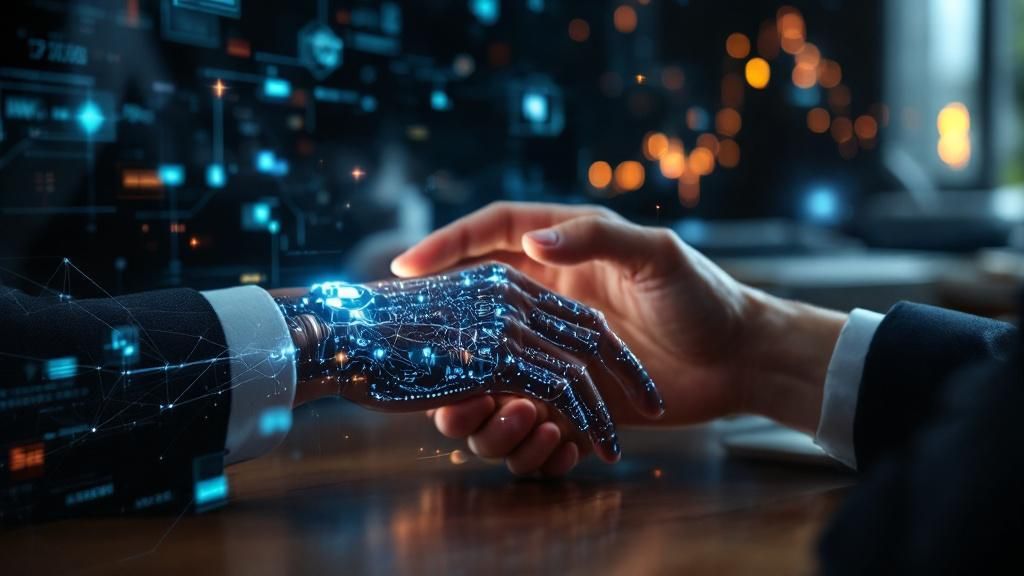How Artificial Intelligence Is Deepening Human Connection in 2025
Key Takeaways
AI is enhancing emotional intelligence and human empathy in digital spaces.
Real-time translation and sentiment analysis are breaking down communication barriers.
AI-driven tools are used in therapy, education, and inclusive communication.
Empathetic AI is becoming a central force in customer experience and support.
Human oversight and ethical design are critical for AI to deepen—not replace—connection.
A New Era of Communication: AI With a Human Touch
In 2025, artificial intelligence is no longer just a productivity tool—it’s becoming a bridge for more meaningful and empathetic human communication. From personalized mental health chatbots to emotionally intelligent voice assistants, AI is being designed not only to understand us, but to connect us.
While much of the conversation around AI tends to focus on automation or job displacement, a quieter, more human-centered revolution is happening in parallel: AI systems are learning to listen better, respond with context, and create more accessible and emotionally resonant interactions.
Breaking Language Barriers with Real-Time Translation
AI-driven real-time translation tools are transforming global communication. Services like Google Translate, DeepL, and Meta’s Universal Speech Translator are evolving to:
Translate regional dialects and slang with improved accuracy
Handle live speech across group calls and video meetings
Retain emotional tone and context in multilingual conversations
This linguistic progress is enabling businesses, educators, and creators to build bridges between cultures at scale.
Sentiment Analysis and Emotion Recognition
Through natural language processing (NLP) and computer vision, AI tools are now able to detect and interpret emotional cues in voice, text, and facial expressions. This technology is powering:
Customer support systems that escalate based on user frustration or urgency
Mental health apps that adapt tone and content based on emotional states
Educational platforms that respond to student confusion or stress
This capability makes digital experiences more responsive and attuned to human needs.

Mental Health and AI-Driven Therapy
AI is playing an increasingly important role in providing scalable, stigma-free access to mental health resources. Tools like Woebot and Wysa offer:
24/7 chat-based emotional support
Cognitive Behavioral Therapy (CBT) techniques
Mood tracking and personalized journaling prompts
According to the WHO, global access to mental health services is still severely limited. AI therapy companions are bridging this gap, especially for those in remote or underserved areas.
Empathetic AI in Customer Experience
Brands are turning to empathetic AI to improve support experiences and build stronger relationships. Advanced chatbots and voice agents use context-aware responses to:
Detect frustration or urgency
Offer tailored solutions instead of generic replies
Handoff to humans when necessary to preserve trust
This hybrid model—AI + human empathy—is creating smoother, more meaningful digital touchpoints across sectors like banking, healthcare, and retail.
Inclusive Communication and Accessibility
AI also plays a key role in making communication more inclusive:
Voice-to-text and text-to-voice tools for the hearing- or speech-impaired
Visual recognition tools that describe content for the visually impaired
Language simplification algorithms that rephrase complex language for broader comprehension
In 2025, inclusivity isn't just a feature—it's becoming a standard.
AI in Education and Relationship Building
Educators and learners are embracing AI to create more tailored, engaging experiences. For example:
AI tutors that adapt to learning pace and emotional cues
Collaborative tools that foster deeper digital connections in remote learning
AI prompts that encourage discussion and dialogue over rote memorization
These tools help build not just knowledge—but connection and confidence.

The Future: Co-Evolving With Empathetic Machines
The rise of empathetic AI doesn’t replace human interaction—it enhances it. As AI learns to mirror tone, detect sentiment, and consider psychological context, it becomes a co-pilot in creating better communication systems.
Edge of NFT regularly explores these intersections—how AI, Web3, and decentralized technologies are building more human-centered futures. Through interviews with founders, researchers, and developers, we shine a light on the innovators using AI not just to scale, but to connect.
Frequently Asked Questions
Can AI really understand human emotions?
While AI doesn’t feel emotions, it can recognize emotional patterns through voice tone, word choice, and facial expressions, allowing it to simulate emotionally aware responses.
What are the risks of using AI in communication?
Without proper oversight, AI can misunderstand context or reinforce bias. That's why ethical design, human review, and transparency are key.
Is AI replacing therapists or human support?
No. AI is best viewed as a complement to human care, offering scalable support and acting as a first step before human interaction.
How is AI used in education to foster better communication?
AI enables personalized learning, responsive feedback, and collaborative digital environments that go beyond lecture-based models.
Are AI chatbots actually empathetic?
They aren’t truly empathetic, but they’re programmed to simulate empathy and offer responses that align with user emotional states.
Conclusion: From Cold Code to Warm Conversation
AI is becoming more than a tool—it’s evolving into a companion in communication. Whether by helping someone open up to a therapy bot, removing language barriers in global meetings, or personalizing a classroom experience, AI is showing its capacity to deepen—not diminish—human connection.
At Edge of NFT, we continue to spotlight how this convergence of technology and empathy is shaping more meaningful digital interactions in 2025 and beyond.


.jpg)

.jpg)
.webp)
.webp)
.webp)


.svg)









